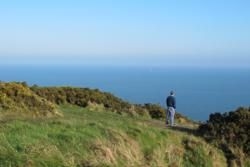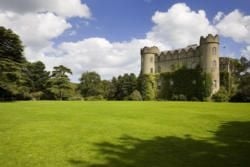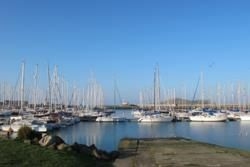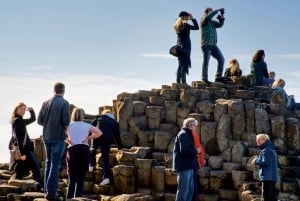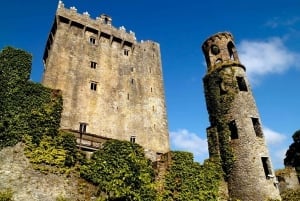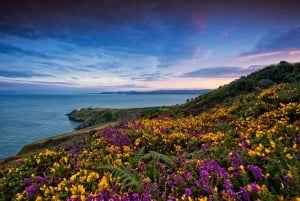Malahide, Sutton + Howth
If it’s fresh air and seaside scenery you’re after, you’ll find some attractive options for spending sunny afternoons or day-tripping in Dublin's northern ‘burbs - Malahide, Sutton and Howth.
An inhabited site since about 6000 BC (but persistently settled since only about 795 or so), Malahide is an ancient village with modern appeal. From the invading Vikings to the Danes to the Anglo-Normans - and now well-heeled locals seeking a genteel spot to hide away from the city’s hustle and bustle - Malahide has literally provided a safe harbour for centuries.
Lying on 250 rolling acres of prime park land, Malahide Castle will keep the history buffs amused for hours. As for the small harbour settlement nearby, from humble beginnings as a salt harvesting centre it began to grow in popularity as an easy-to-reach posh Georgian seaside resort for wealthy Dubs. A little over a hundred years later, the housing estate boom reached sleepy Malahide, with the first (Ard na Mara) appearing in 1964. Ever since then, the estates have grown and spread (and the population has zoomed accordingly). However the village has retained its charm, and its distinctive core remains intact today. With a lovely marina and no lack of retail outlets, restaurants and pubs, once you’ve seen the Castle there’s still plenty to explore before heading back into town. The area is serviced by both the DART and Dublin Bus.
Actually, let’s backtrack a minute…on the way out to Malahide, you’ll encounter Sutton. This narrow strip of land is the only thing connecting neighbouring Howth Head to the mainland. If you like the idea of an extended stroll, you can begin in Sutton (start near the site of the old village and Sutton House), which continues all the way to Howth village. The Burrow Beach (also known as The-Hole-In-The-Wall by locals) is another popular choice, a golden sandy expanse approximately 1.2 kilometers/three-quarters of a mile long.
Continuing eastward from Sutton is Howth (rhymes with ‘both’). Truly the end of the road, it sits on a peninsula known by the same name on the north edge of Dublin Bay. The name ‘Howth’ is thought to be of Norse origin. Having colonised the eastern shores of Ireland and built the settlement of Dublin as a strategic base between Scandinavia and the Mediterranean, Vikings first invaded Howth in 819. From an isolated fishing village, the town has grown into a busy Dublin suburb, with a mix of dense residential development and wild hillside. Howth is also home to one of the oldest occupied buildings in Ireland, Howth Castle.
From here, nature lovers can get a boat across to Ireland’s Eye.This tiny land mass is now uninhabited, save for the colonies of gannet, black guillemot and great black-backed gull.
Photos, from top to bottom: Malahide Castle (courtesy of Tourism Ireland); Howth Head; Howth Marina


